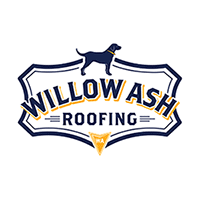South Carolina’s unique climate, characterized by high humidity, significant rainfall, hurricanes, and extreme heat, poses distinct challenges to the integrity and longevity of roofing systems. For homeowners in the Palmetto State, understanding these challenges and recognizing roofing issues early can be the difference between minor repairs and extensive, costly damage. This guide aims to equip South Carolina homeowners with the knowledge needed to identify common roofing issues, ensuring that their homes remain safe and well-protected against the elements.
The ability to spot early signs of roofing damage not only helps in maintaining the structural integrity of your home but also contributes to preserving its aesthetic appeal and value. Regular inspections and maintenance become crucial in a climate as demanding as South Carolina’s, where the weather can quickly turn a small problem into a significant concern. Let’s dive into how South Carolina’s climate affects roofing, the most common roofing materials used in the area, and the signs of wear and damage homeowners should be vigilant about.
Understanding South Carolina’s Climate and Its Effects on Roofs

South Carolina’s climate is known for its humidity, heavy rainfall, and the potential for hurricanes, all of which can severely test the durability and resilience of roofing materials. The state’s weather conditions can accelerate wear and tear, making roofs susceptible to leaks, mold growth, and structural damage. This environment demands roofing materials and construction techniques specifically designed to withstand such challenges, highlighting the importance of choosing the right materials and regular inspections.
Additionally, the extreme heat and UV exposure common in South Carolina during the summer months can cause roofing materials to age prematurely. Prolonged exposure to intense sunlight can make roofing materials brittle, leading to cracking, curling, and eventual breakdown. Understanding these environmental factors is crucial for homeowners when assessing their roofing needs and maintenance schedules, ensuring that their homes are equipped to withstand South Carolina’s harsh climate.
Common Roofing Materials Used in South Carolina Homes
In South Carolina, asphalt shingles, metal roofing, and clay tiles are among the most popular roofing materials. Each comes with its advantages and challenges, especially when faced with the state’s climate. Asphalt shingles, for instance, are prized for their affordability and versatility but can suffer from granule loss and blistering under extreme heat and humidity. Metal roofing, while more durable and resistant to high winds, can be susceptible to corrosion without proper coatings, especially in coastal areas where salt spray is a concern.
Clay tiles offer excellent durability and resistance to decay, making them a popular choice for their aesthetic appeal and longevity. However, they are also more susceptible to cracking under impact, such as from fallen tree branches during storms. Choosing the right roofing material involves balancing factors such as cost, aesthetic preferences, and the specific weather challenges of South Carolina, making it essential for homeowners to consult with experienced professionals who understand the local climate and roofing requirements.
Signs of Roofing Wear and Damage
Visible signs of roofing wear and damage can include missing shingles, cracked tiles, and damaged flashing. These issues can often be spotted from the ground with a pair of binoculars, allowing homeowners to identify potential problems without needing to climb onto the roof. Inside the home, signs of leaks, such as water stains on ceilings or walls, can indicate roofing damage that needs immediate attention to prevent further interior damage.
Less obvious signs of damage may require a closer look. For example, granule loss on asphalt shingles might only be noticeable up close or in the gutters, where granules accumulate after being washed off by rain. Similarly, sagging areas or a bouncing sensation when walking on the roof can indicate weakened decking or structural issues. Regularly checking these signs and knowing what to look for can help homeowners catch problems early, before they lead to more significant damage.
Specific Roofing Issues Faced by South Carolina Homeowners
Leakage and water damage are primary concerns for South Carolina homeowners, with the state’s heavy rainfall and potential for hurricanes. Early signs of leaks include water spots on ceilings, mold growth along exterior walls, or musty smells in the attic. Regularly cleaning gutters and downspouts to ensure proper drainage can help mitigate these risks by preventing water buildup on the roof.
Wind damage is another significant issue, particularly in coastal areas prone to hurricanes. High winds can lift and remove shingles or tiles, leaving the roof deck and underlayment exposed to the elements. After any severe storm, even if no damage is visible from the ground, it’s wise to conduct a thorough inspection—or have a professional do so—to ensure your roof’s integrity remains intact. This proactive approach can prevent minor damages from escalating into costly repairs.
DIY Inspection Tips
Conducting a DIY roof inspection safely involves using a sturdy ladder to access the roof, wearing slip-resistant shoes, and using caution not to walk on the roof more than necessary to avoid causing damage. Start by looking for visible signs of wear or damage, such as lifted or missing shingles, damaged flashing around chimneys and vents, and blocked gutters. It’s also essential to check the attic for any signs of water intrusion, as this can indicate a leak that’s not yet visible on the roof itself.
While DIY inspections can help identify obvious problems, they are not a substitute for the expertise of a professional roofing inspector. Homeowners should use these inspections to familiarize themselves with the condition of their roof and to identify any immediate concerns that need professional attention. However, for a comprehensive assessment, especially after severe weather events, consulting with a professional is always recommended.
The Importance of Professional Roof Inspections
Professional roof inspections are crucial for a thorough evaluation of your roof’s condition. Certified inspectors have the experience and knowledge to identify potential issues that may not be apparent to the untrained eye, including minor leaks, improper ventilation, and signs of wear that could lead to future problems. They can also provide valuable advice on maintenance and repairs, helping homeowners make informed decisions about their roofs.
Scheduling a professional inspection at least once a year, or following any severe weather event, can help ensure that any minor issues are addressed before they become major problems. These inspections are particularly important in South Carolina, where the climate can cause unique challenges to roofing materials. A professional assessment can offer peace of mind, knowing that your roof is in good condition and capable of protecting your home against the elements.
Maintenance Tips to Extend the Life of Your Roof
Routine maintenance is key to extending the life of your roof and preventing common issues. This includes cleaning gutters and downspouts to ensure proper water drainage, trimming tree branches that could potentially fall on the roof, and regularly checking for signs of wear or damage. Seasonal maintenance is also important in South Carolina, where preparing your roof for hurricane season or addressing any issues before the heavy rains of spring can make a significant difference in its ability to withstand the elements.
Additionally, addressing any repairs promptly, no matter how minor they may seem, can prevent more extensive and costly damage in the future. Regular maintenance, combined with professional inspections, forms a comprehensive approach to roof care that can significantly extend the life of your roof and ensure it continues to protect your home efficiently.
Identifying common roofing issues early and taking proactive steps to address them is crucial for maintaining the safety, comfort, and longevity of your South Carolina home. Understanding the specific challenges posed by the state’s climate, knowing the signs of wear and damage, and conducting regular inspections and maintenance can help prevent minor issues from becoming major problems.
If you’re concerned about your roof’s condition or it’s been a while since your last inspection, don’t hesitate to reach out to Willow Ash Roofing. Our team of experienced professionals is equipped to conduct thorough inspections, identify any issues, and provide expert guidance on the best steps to protect your roof and home. Contact us today to schedule your professional roof inspection and ensure your home remains safe and secure, no matter what South Carolina’s weather brings.
